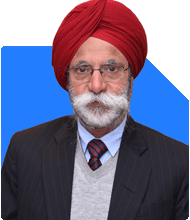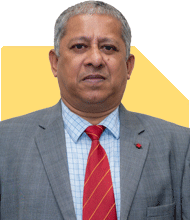Ramalingam Kalirajan |8093 Answers |Ask -Follow
Mutual Funds, Financial Planning Expert - Answered on May 23, 2024
He has an MBA in finance from the University of Madras and is a certified financial planner.
He is the director and chief financial planner at Holistic Investment, a Chennai-based firm that offers financial planning and wealth management advice.... more

We have an Annual Income of 1.5Cr, Rental Assets that yield 24L Annually, Demat Portfolio of 1.5CR nd SIPs of 4.2L monthly. We have no loans or liabilities currently. I want to create a corpus of atleast 30Cr within the next 7-8 years. Kindly advise strategies to achieve the same.
Current Financial Situation
Income and Assets
Annual Income: Rs. 1.5 crore
Rental Income: Rs. 24 lakh annually
Demat Portfolio: Rs. 1.5 crore
SIPs: Rs. 4.2 lakh monthly
No Loans or Liabilities
Genuine Compliments
Your disciplined approach to financial planning and investments is impressive. Achieving this level of financial stability and growth showcases your commitment and strategic mindset.
Strategy to Achieve Rs. 30 Crore Corpus
1. Maximize Equity Investments
Equity investments are crucial for high returns over a long period. Your current SIPs are a great start, but increasing your exposure to equity can accelerate growth.
Increase SIP Contributions
If possible, increase your monthly SIP contributions. Analyze your monthly expenses and identify areas where you can allocate more towards SIPs. This incremental increase can significantly impact your corpus over time.
Diversify Equity Portfolio
Diversify your equity investments across large-cap, mid-cap, and small-cap funds. Consider including sector-specific and international funds to spread risk and capture growth across different markets.
2. Optimize Your Demat Portfolio
Your demat portfolio of Rs. 1.5 crore can be a powerful growth engine. Regularly review and rebalance it to ensure optimal performance.
Regular Portfolio Review
Conduct quarterly reviews of your demat portfolio to align with market trends and your financial goals. Remove underperforming stocks and invest in high-growth opportunities.
Dividend Reinvestment
Reinvest dividends from your demat portfolio into high-growth stocks or mutual funds. This compounding effect can enhance your returns significantly.
3. Leverage Rental Income
Your rental assets yield a substantial annual income of Rs. 24 lakh. Utilizing this income efficiently can contribute towards your goal.
Reinvest Rental Income
Allocate a portion of your rental income towards additional investments. Consider investing in mutual funds, stocks, or other high-yield instruments.
Explore Commercial Real Estate
While direct real estate investment isn't recommended, exploring commercial real estate funds or REITs can provide stable returns and diversification.
4. Explore High-Yield Investment Options
Beyond traditional equity and mutual funds, explore other high-yield investment options to enhance your portfolio's growth potential.
Venture Capital and Private Equity
Invest a portion of your corpus in venture capital or private equity funds. These investments carry higher risks but offer the potential for significant returns.
International Investments
Diversify your portfolio with international mutual funds or ETFs. This can help mitigate country-specific risks and tap into global growth opportunities.
5. Tax Efficiency and Savings
Efficient tax planning can save a substantial amount, which can be reinvested to grow your corpus.
Utilize Tax-Advantaged Accounts
Maximize contributions to tax-saving instruments like ELSS funds, PPF, and NPS. These not only save taxes but also provide decent returns.
Strategic Tax Harvesting
Implement tax harvesting strategies to minimize tax liabilities on capital gains. This involves selling underperforming assets to offset gains from profitable investments.
6. Monitor and Adjust
Regular monitoring and timely adjustments are essential to stay on track with your financial goals.
Periodic Financial Reviews
Conduct bi-annual reviews of your overall financial plan. Adjust your investment strategy based on market conditions and changes in your financial situation.
Consult a Certified Financial Planner
Regular consultations with a Certified Financial Planner (CFP) can provide expert insights and keep your strategy aligned with your goals.
Expected Returns and Risk Management
Targeted Return Rate
Aim for an annual return of around 12-15%. This is achievable with a balanced mix of high-growth equity and stable debt investments.
Risk Management
Diversify across asset classes to mitigate risk. Maintain an emergency fund to cover unexpected expenses, ensuring that your long-term investments remain untouched.
Conclusion
Reaching a corpus of Rs. 30 crore in 7-8 years requires disciplined investing, diversification, and regular monitoring. By optimizing your equity investments, leveraging rental income, exploring high-yield options, and ensuring tax efficiency, you can achieve your financial goal. Regular reviews and expert guidance from a Certified Financial Planner will further enhance your strategy.
Best Regards,
K. Ramalingam, MBA, CFP,
Chief Financial Planner,
www.holisticinvestment.in
You may like to see similar questions and answers below
Omkeshwar Singh | Answer |Ask -Follow
Head, Rank MF - Answered on Nov 16, 2022
Ramalingam Kalirajan |8093 Answers |Ask -Follow
Mutual Funds, Financial Planning Expert - Answered on Jun 25, 2024
Ramalingam Kalirajan |8093 Answers |Ask -Follow
Mutual Funds, Financial Planning Expert - Answered on Jul 17, 2024
Ramalingam Kalirajan |8093 Answers |Ask -Follow
Mutual Funds, Financial Planning Expert - Answered on Jun 24, 2024
T S Khurana |402 Answers |Ask -Follow
Tax Expert - Answered on Mar 13, 2025
T S Khurana |402 Answers |Ask -Follow
Tax Expert - Answered on Mar 13, 2025
T S Khurana |402 Answers |Ask -Follow
Tax Expert - Answered on Mar 13, 2025
Nayagam P P |4329 Answers |Ask -Follow
Career Counsellor - Answered on Mar 13, 2025
Nayagam P P |4329 Answers |Ask -Follow
Career Counsellor - Answered on Mar 13, 2025
Nayagam P P |4329 Answers |Ask -Follow
Career Counsellor - Answered on Mar 13, 2025
Nayagam P P |4329 Answers |Ask -Follow
Career Counsellor - Answered on Mar 13, 2025
Prof Suvasish Mukhopadhyay |501 Answers |Ask -Follow
Career Counsellor - Answered on Mar 12, 2025
Milind Vadjikar |1107 Answers |Ask -Follow
Insurance, Stocks, MF, PF Expert - Answered on Mar 12, 2025
Milind Vadjikar |1107 Answers |Ask -Follow
Insurance, Stocks, MF, PF Expert - Answered on Mar 12, 2025


























